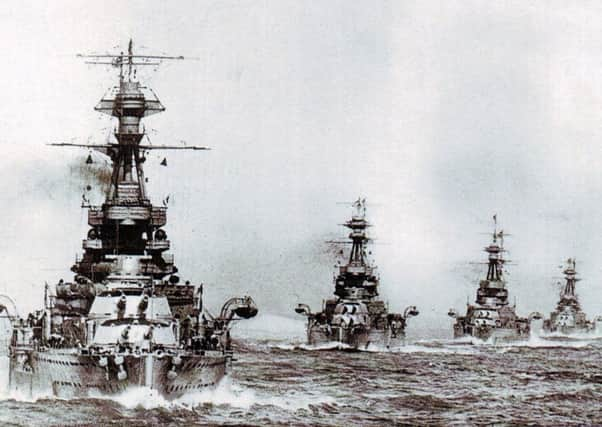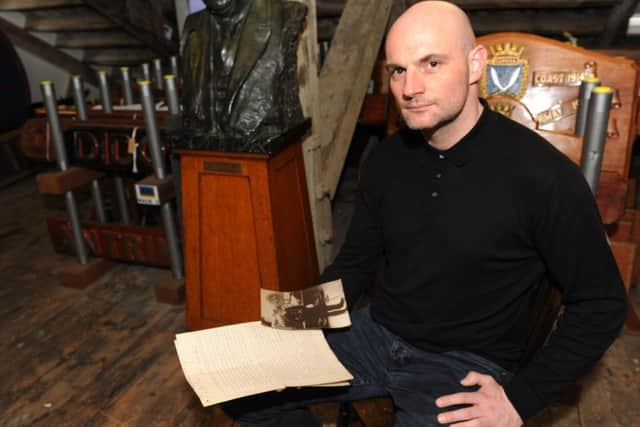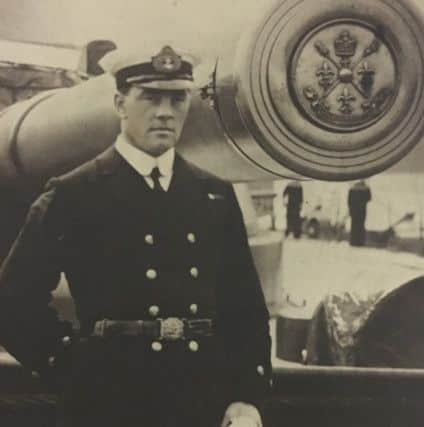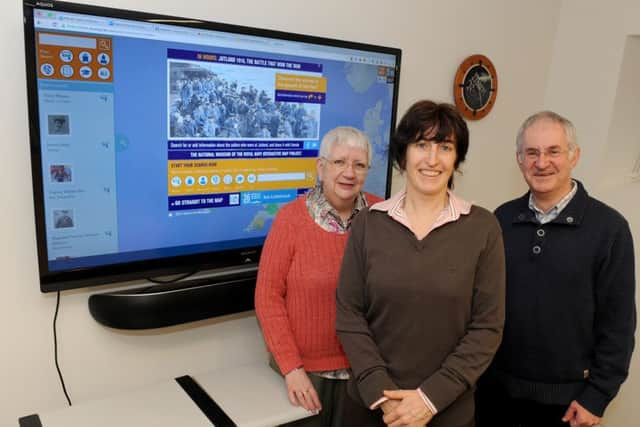Jutland -charting the course of Royal Navy's biggest battle


It has been called the biggest naval battle of all time.
And now an interactive map is helping to share the stories of the thousands of sailors who took part in the Battle of Jutland, when the Royal Navy faced down the might of Kaiser Wilhelm’s German fleet.
‘Many of the people who went out there didn’t come back,’ says Casey Keppel-Compton from the National Museum of the Royal Navy (NMRN), who is digital manager of the project.
Advertisement
Hide AdAdvertisement
Hide Ad‘We can’t allow them to be forgotten – they mustn’t be the forgotten sailors.’
Visitors to the map, which is online at nmrn.nautoguide.com, can zoom in on entries to read more about the sailors, ships, memorials and sites connected with the First World War battle which took place from May 31 to June 1, 1916.
People can also contribute their own stories of ancestors who were involved in the battle.
Ms Keppel-Compton said the response to the project had been ‘mindblowing’.


Advertisement
Hide AdAdvertisement
Hide AdShe said: ‘On one evening after it was launched we had 10,000 unique users from around the world – it was 100 hits a second.
‘Since then we’ve had a constant stream of e-mails sent to us from people telling fantastic stories about their Jutland family members.
‘A lot of those stories would have previously been hidden in loft boxes.’
Ms Keppel-Compton said a key feature was the ability to share stories found on the map through social media.


Advertisement
Hide AdAdvertisement
Hide AdShe said the project was being driven by a team of 15 volunteers who were working from home inputting information, and the ‘back-end’ developers at Wiltshire-based tech firm NautoGuide.
Ms Keppel-Compton said: ‘We also hope to one day be able to tell the German side of the story. We have a relationship with the German Naval Museum so there is the possibility that will eventually happen.’
Among those who have taken a keen interest in the map is Nick Jellicoe, grandson of Admiral Sir John Jellicoe, who commanded the British Grand Fleet in the battle.
Mr Jellicoe said: ‘This is one of those moments where engaging with the interactive map and what the museum is providing is a real opportunity to fill in some parts of a jigsaw, a family jigsaw you’ve never been able to solve. It’s nice to think about stories from your father, grand-father or great-grandfather, and be able to pass them on.


Advertisement
Hide AdAdvertisement
Hide Ad‘Always one of my biggest regrets is that I never talked to my father in more detail about his father.
‘I never did, and I hope other people don’t make the same mistake.’
The Battle of Jutland is often considered to be a turning point of the war, and although far more British than German lives were lost – 6,094 compared to 2,551 – it is usually thought of as a British victory.
At the end of the battle the British maintained numerical supremacy – only two dreadnoughts were damaged, leaving 23 dreadnoughts and four battlecruisers still able to fight, whilst the Germans had only 10 dreadnoughts.
Advertisement
Hide AdAdvertisement
Hide AdThere have already been more than 6,000 entries included on the map, with many assembled in collaboration with Trevor Penfold at the Imperial War Museum, volunteers from Portsmouth Grammar School, and Karen O’Rawe. Portsdown U3A has also incorporated data from a research project it has been doing about the impact the battle had on people in Portsmouth and Gosport.
n A major exhibition about the Battle of Jutland is due to open at the NMRN on May 12.


36 Hours: Jutland 1916, The Battle That Won The War is described as a ‘once-in-a-lifetime’ opportunity to bring together material from across the UK and Germany to mark the centenary of the battle.
Head of heritage development Nick Hewitt said: ‘The Battle of Jutland is the Royal Navy’s defining moment in the Great War, and perhaps the largest sea battle in history.
Advertisement
Hide AdAdvertisement
Hide Ad‘It’s the only event in the UK’s national First World War centenary programme which is wholly naval in character, and at the NMRN we’ve pulled out all the stops to put together a comprehensive and exciting programme of activity to mark it.’
A GRANDFATHER’S STORY
ERNEST John Read was a Royal Navy gunner who died at the Battle of Jutland, aged 38.
He was one of more than 1,000 men who died when the battlecruiser HMS Invincible was sunk after being hit by enemy shells.
Now his grandson, Toby Read, is using the interactive map to share his ancestor’s story and learn about other lives touched in the only major naval battle of the First World War.
Advertisement
Hide AdAdvertisement
Hide AdToby, 37, from Southsea, said of his grandfather: ‘He was originally from Suffolk but moved down to Portsmouth for the navy. They lived in Chichester Road, which is where my dad was born.
‘He was also in the Boer War, and when Winston Churchill was working as a journalist and was captured on a train, my granddad was a gunner on that train.
‘The Battle of Jutland must have been extremely frightening, but at the same time they had a job to do and they got on with it.’
Toby’s dad was just 18 months old when Ernest Read died. Toby was not born until his father was in his 60s, which explains the relatively short generational gap between him and his grandad.
Advertisement
Hide AdAdvertisement
Hide AdToby, who works as a firefighter in London, said he had added his grandad’s story to the interactive map so he could help preserve the memory of those who lost their lives.
He said: ‘I think it’s important that we do remember these people and the sacrifices they made for what we have today.
‘The interactive map is an excellent way of doing that.’
Toby has an eight-year-old daughter, Maisie, who he wanted to know about the battle as well.
He said: ‘We should keep the knowledge of this alive for the next generation.’
LOCAL INPUT
Advertisement
Hide AdAdvertisement
Hide AdDATA from a local history group provided the jumping-off point for the NMRN’s Battle of Jutland interactive map.
The Cosham-based Portsdown U3A launched a project more than two years ago to investigate the effects of the naval encounter.
Steve Doe, 70, of Cosham, said the battle would have had a huge impact on Portsmouth and surrounding areas.
‘Our local history group started doing a research project for the centenary of the First World War at the end of 2013,’ Mr Doe explained.
Advertisement
Hide AdAdvertisement
Hide Ad‘One of our number said he was interested in doing something on the Battle of Jutland because his grandfather was on HMS Iron Duke, which saw action in the battle.
‘So we talked about it and we wanted to look up the number of Portsmouth and Gosport sailors who lost their lives and what the effect of that was on their families.’
Carole Chapman, 64, another U3A member from Portsmouth, said: ‘The effect must have been comparable to the Pals battalions where everybody lived in the same area. If everyone’s involved in the same action then you’re going to get huge casualty rates in a concentrated space.’
The group was granted £7,900 towards the research project from the Heritage Lottery Fund last September. The money is being used to create a display which people will be able to use to learn more about the battle.
Advertisement
Hide AdAdvertisement
Hide AdThe U3A is hosting a series of drop-in sessions where people can learn more about the project and contribute their own family stories.
The next session will be at St Wilfrid’s Church in Fratton on March 12 from 10am to midday, and there will be another at Portsmouth’s central library on April 7 from 3pm to 6pm.
E-mail s.doe83@ntlworld to find out more.